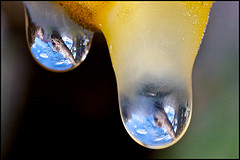Recent Approaches in Microspheres: a Novel Drug Delivery System
Microsphere technology has been studied extensively for the sustained delivery of therapeutic agents. Microspheres can be manufactured from various natural and synthetic materials. Glass microspheres, polymer microspheres and ceramic microspheres are commercially available. Recent researches are confined to the discovery of active microspheres in the treatment of cancers. The present paper review the recent approaches in microspheres technology, a novel drug delivers system.
The whole 6 pages article is available for download here.
Microsphere is a term used for small spherical particles, (Fig. 1) with diameters in the micrometer range (typically 1μm to 1000μm (1mm)). Microspheres are sometimes referred to as microparticles. Microspheres can be manufactured from various natural and synthetic materials. Glass microspheres, polymer microspheres and ceramic microspheres are commercially available. Solid and hollow microspheres vary a lot in density and therefore, are used for different applications. Hollow microspheres are typically used as additives to lower the density of a material. Solid microspheres have numerous applications depending on whatInvitrogen Life Science. Microspheres vary widely in quality, sphericity, uniformity, particle size and particle size distribution. The appropriate microsphere needs to be chosen for each unique application.
Microscopic, firm spherules which form on the cooling of hot saturated solutions of proteinoids. They were first reported in 1959 by Sidney Fox, K. Harada, and J. Kendrick who proposed that microspheres might represent a significant early stage in precellular evolution. It has been suggested that their greater stability makes them a better proposition in this regard than coacervates. One milligram of proteinoid can yield 100 million microspheres, ranging from 1.4 to about 2.5 microns in diameter. Microspheres have been observed to retain their form for several weeks and, when sectioned, may display a double-walled structure. Recently, Fox argued that microspheres also display characteristics of primitive nerve cells.
Polyethylene and polystyrene microspheres are two most common types of polymer microspheres. Polystyrene microspheres are typically used in biomedical applications due to their ability to facilitate procedures such as cell sorting and immunio precipitation. Proteins and ligands absorb onto polystyrene readily and permanently which makes polystyrene microspheres suitable for medical research and biological laboratory experiments. Polyethylene Microspheres are commonly used as permanent or temporary filler. Lower melting temperature enables polyethylene microspheres to create porous structures in ceramics and other materials. High sphericity of polyethylene microspheres, as well as availability of colored and fluorescent microspheres, makes them highly desirable for flow visualization and fluid flow analysis, microscopy techniques, health sciences, process troubleshooting and numerous research applications. Charged polyethylene microspheres are also used in electronic paper digital displays.
The whole 6 pages article is available for download here.

